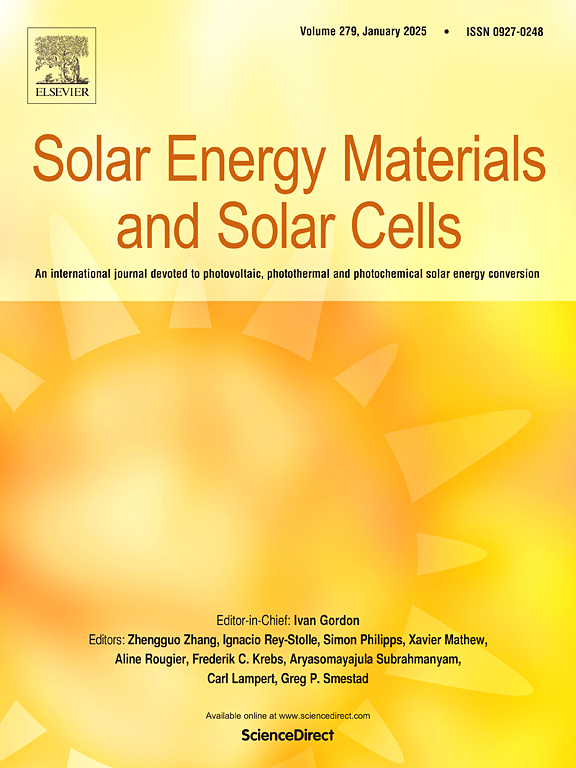Hydrogenation characteristics of p-type poly-Si passivating contacts on textured surface for double-sided TOPCon devices
IF 6.3
2区 材料科学
Q2 ENERGY & FUELS
引用次数: 0
Abstract
An effective hydrogenation process for polycrystalline silicon based passivating contacts (TOPCon) is crucial to achieve a very high level of surface passivation. This work examines the hydrogenation characteristics of p-type TOPCon on textured surface morphology by applying dielectric layers such as AlOx, SiNx and stacks thereof followed by an activation in a furnace anneal or by fast-firing. In a direct comparison with n-type TOPCon, p-type TOPCon requires higher activation temperatures and a higher activation energy. For a successful integration of n-type and p-type TOPCon into bottom cell precursors with 726 mV implied Voc for tandem devices, stacks featuring AlOx are beneficial to increase the thermal stability especially for n-type TOPCon. With regards to fast-firing processes, the influence of an additional pre- or post-annealing step is investigated. The peak firing temperature can significantly be reduced when applying an annealing step beforehand and a post-firing anneal improves surface passivation to recombination current densities J0s as low as 7.9 fA/cm2 for p-type TOPCon on textured surface which is one of the lowest reported in literature.
求助全文
约1分钟内获得全文
求助全文
来源期刊

Solar Energy Materials and Solar Cells
工程技术-材料科学:综合
CiteScore
12.60
自引率
11.60%
发文量
513
审稿时长
47 days
期刊介绍:
Solar Energy Materials & Solar Cells is intended as a vehicle for the dissemination of research results on materials science and technology related to photovoltaic, photothermal and photoelectrochemical solar energy conversion. Materials science is taken in the broadest possible sense and encompasses physics, chemistry, optics, materials fabrication and analysis for all types of materials.
 求助内容:
求助内容: 应助结果提醒方式:
应助结果提醒方式:


